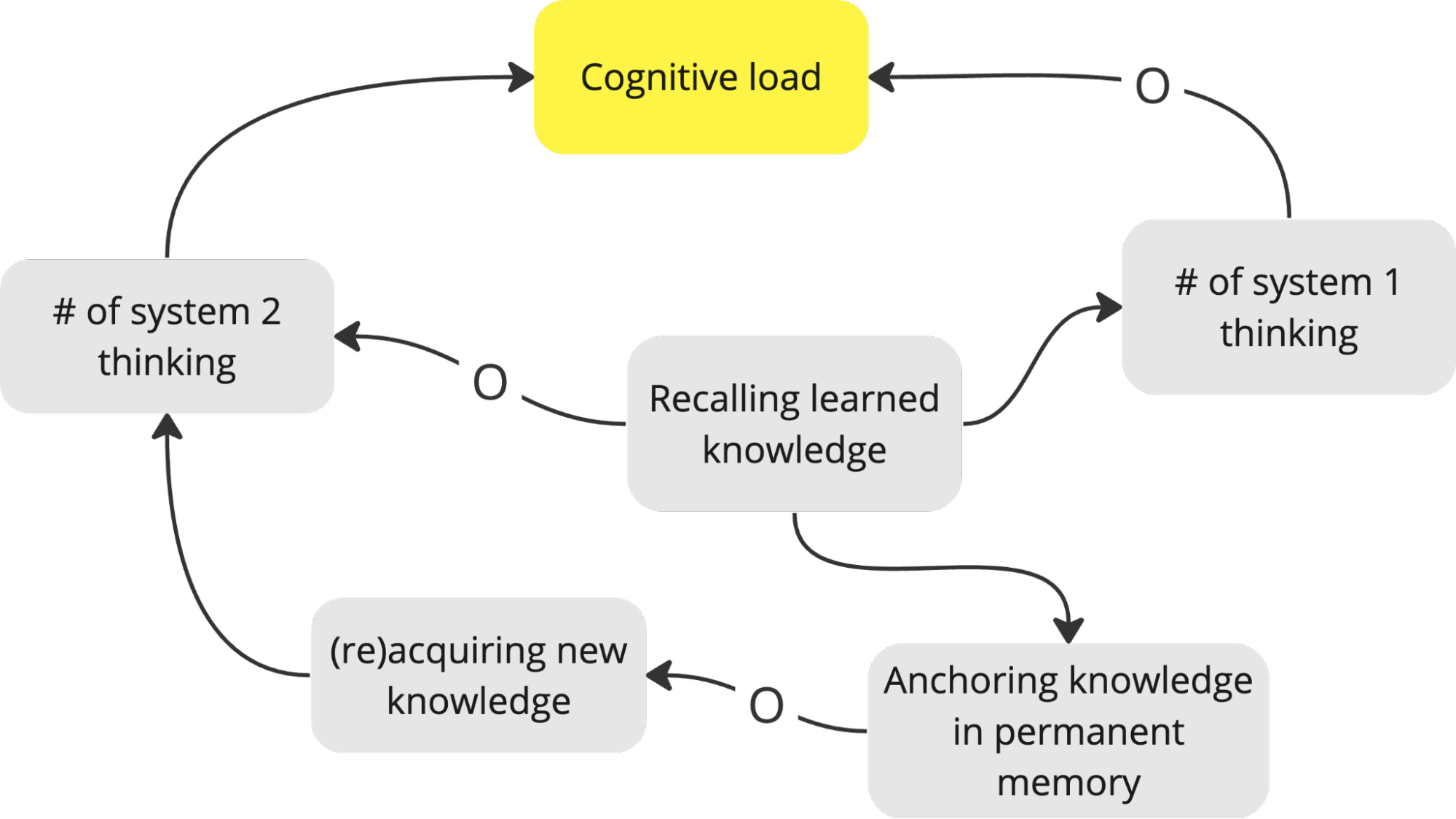Definition of “Kahneman: Thinking, Fast and Slow”
In the above chapters, we explored the concept of working memory, which is directly connected to the effort our gray mass needs to perform a task. When talking about effort, we must explore the work of Daniel Kahneman.
The below extracts is from: https://en.wikipedia.org/wiki/Thinking,_Fast_and_Slow



From the above extract, we can observe that System 2 thinking requires more effort than System 1 thinking, which uses heuristics to make decisions and perform tasks. Unfortunately, this leads to many biases.
If we consider learning new knowledge to be a System 2 thinking activity that requires high effort from our brains, why would we endure it? Well, by using or actively recalling that newly acquired knowledge more often (refer to the section on Ebbinghaus’s forgetting curve), we anchor it to our permanent memory. Once new knowledge is stored in our memory, it turns into a System 1 thinking activity, requiring less effort.

This is a very useful idea when observing successful patterns that frequently occur within a software product development environment, encouraging us to ask: How can we move these into System 1 ASAP? On the other hand, specific occurrences of new knowledge or patterns with a low frequency of occurrence are not so useful to have in our System 1 thinking practice.
For example, the active use of design patterns in software product development is hard at first but a healthy habit to develop. When design patterns turn into a System 1 thinking practice, new information is associated with old patterns (heuristics), and thus, less effort is used when performing a task.

Finding ways to speed up the transition from System 2 to System 1 when thinking about useful practices will help us reduce the overall effort involved in performing certain software product development activities.